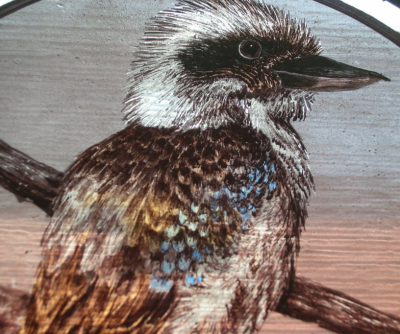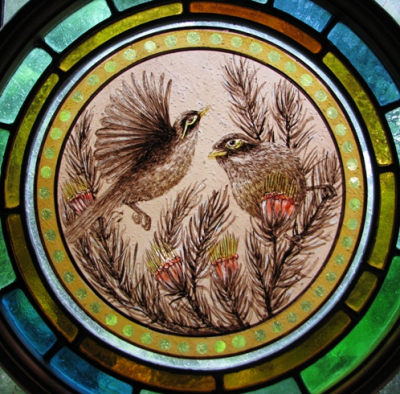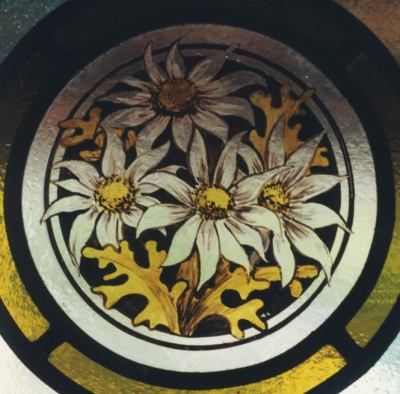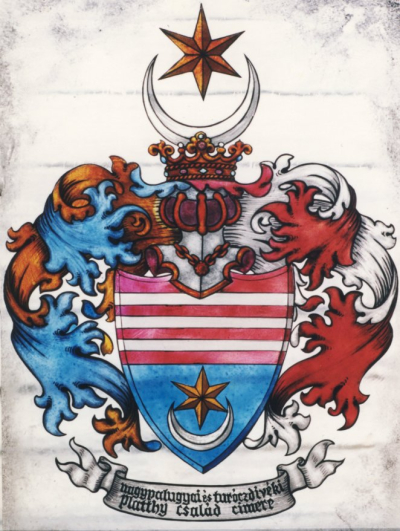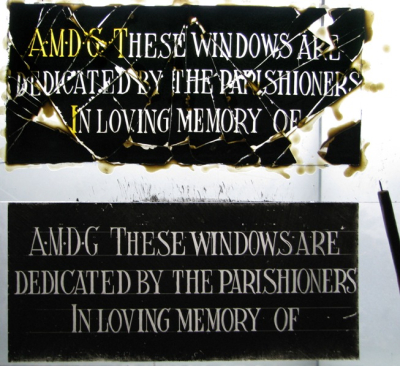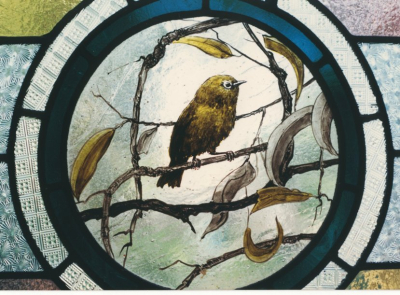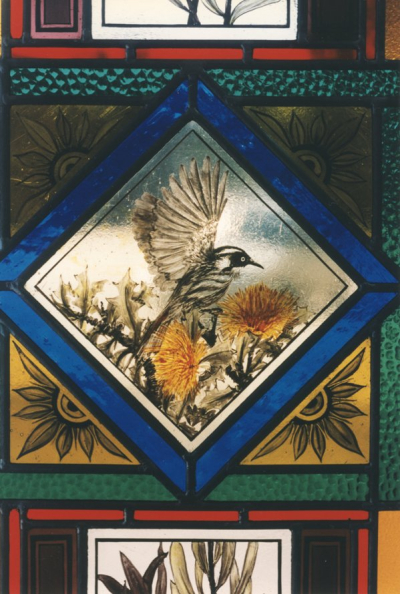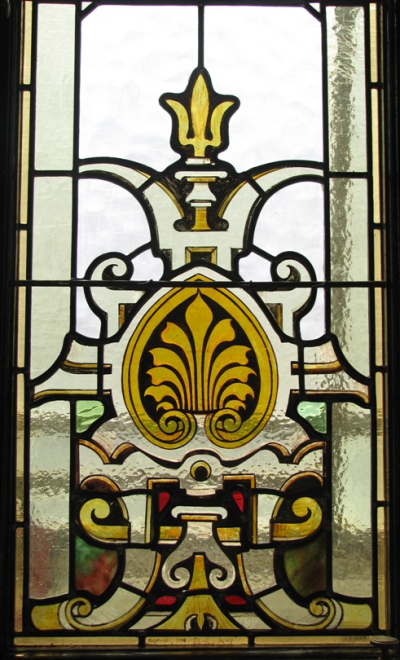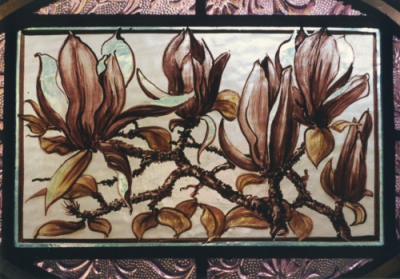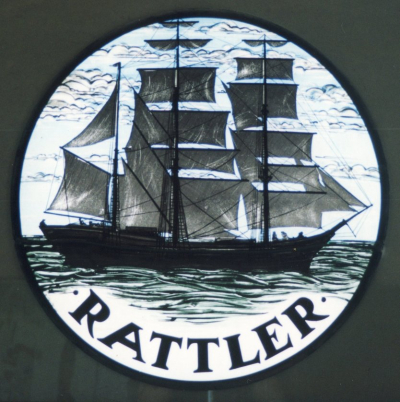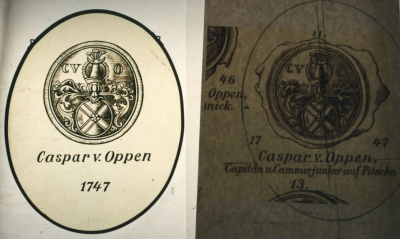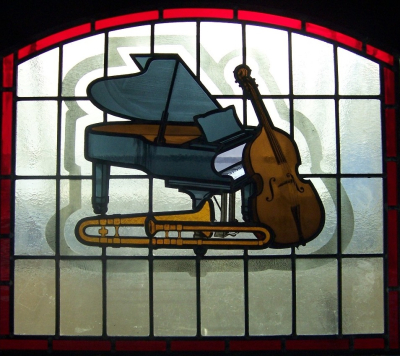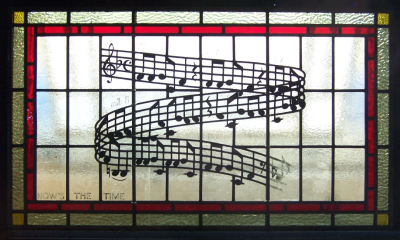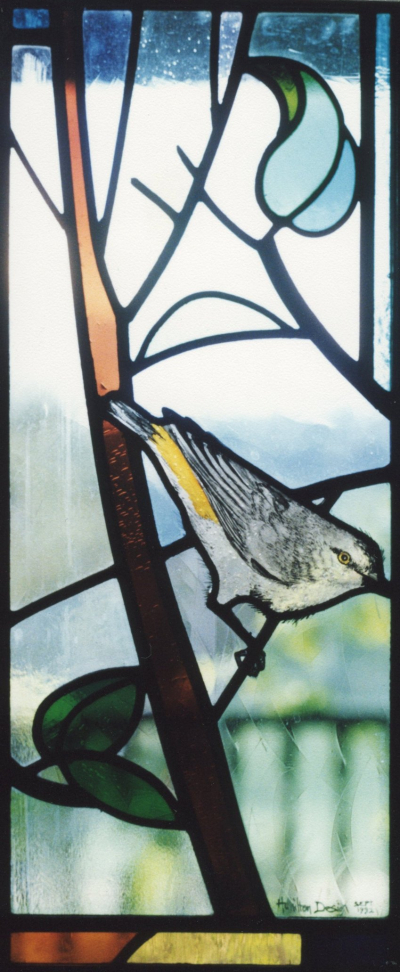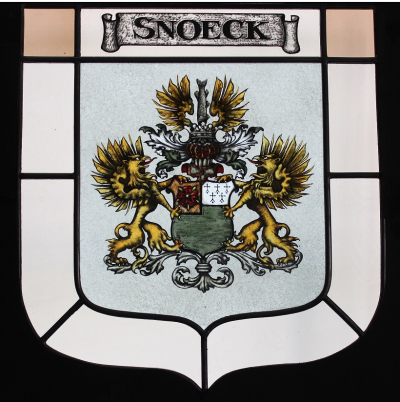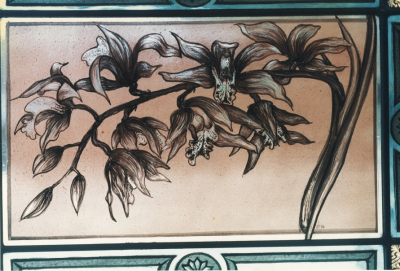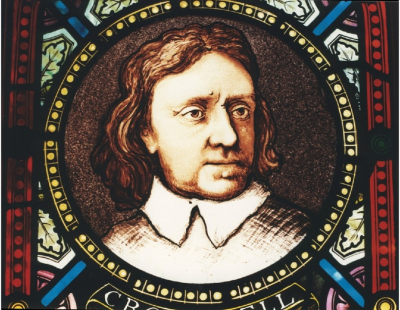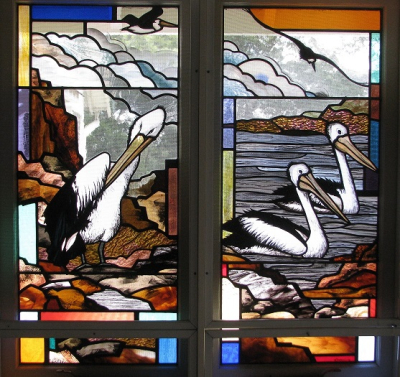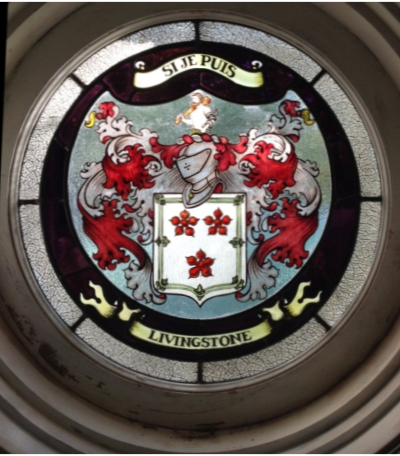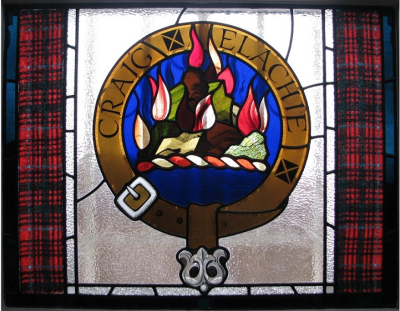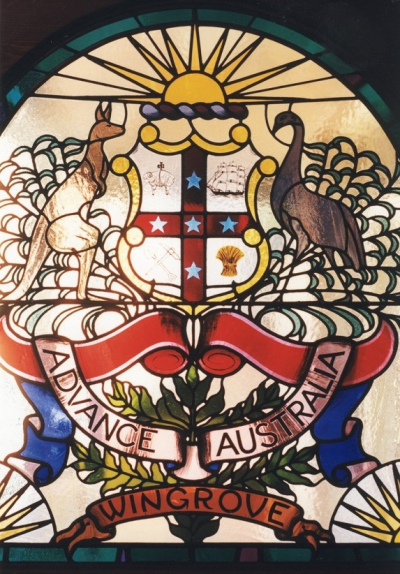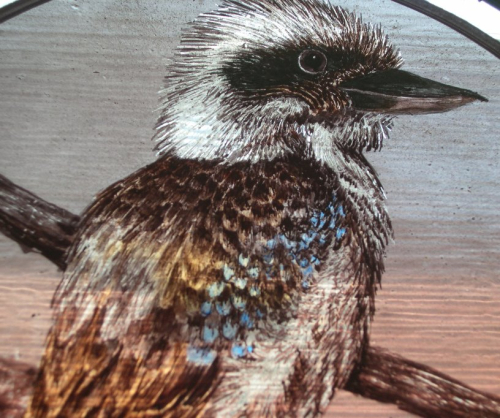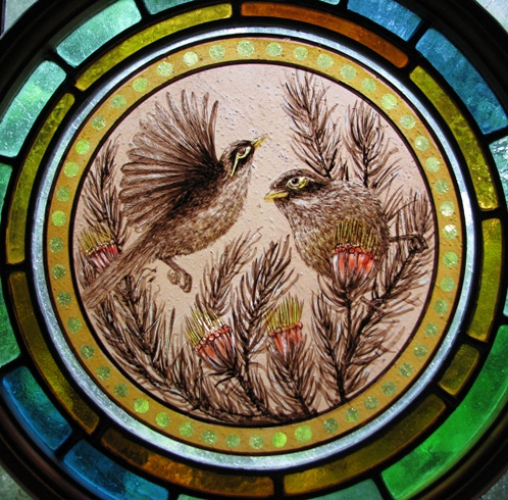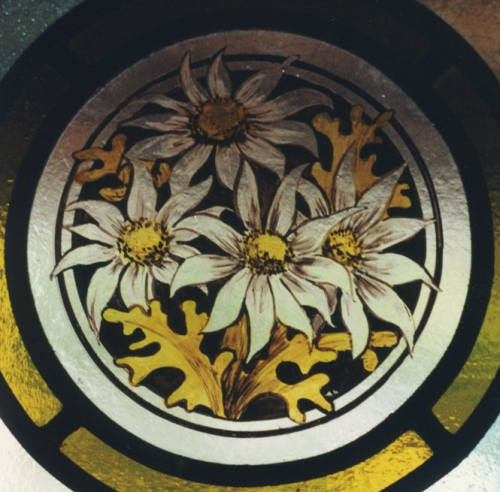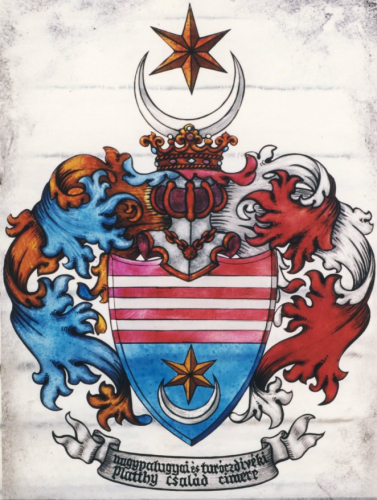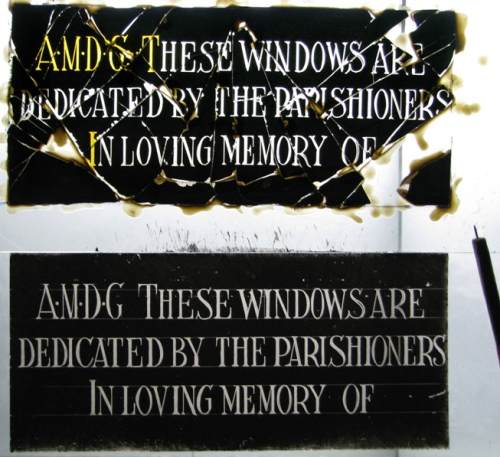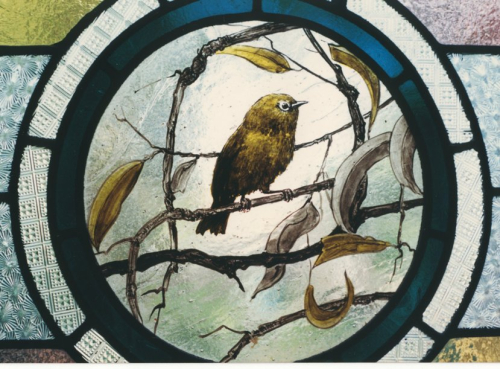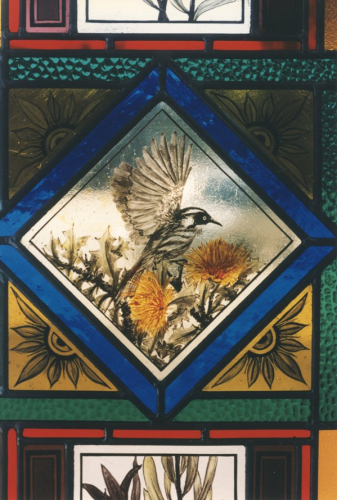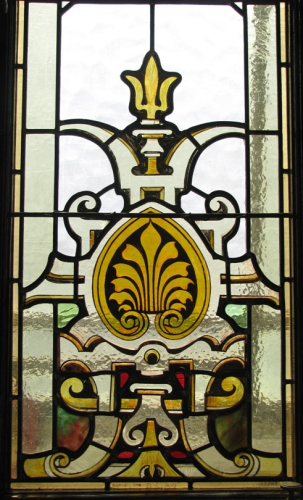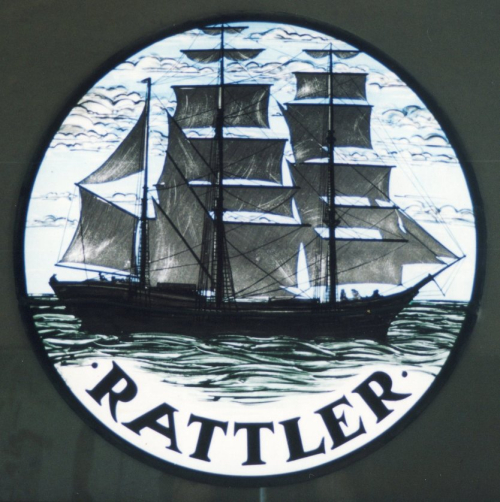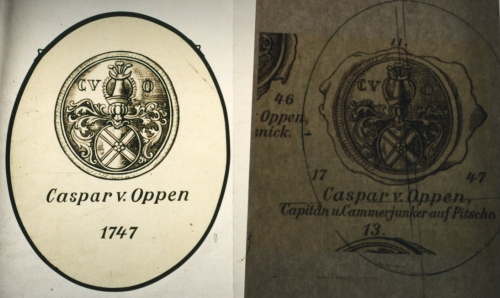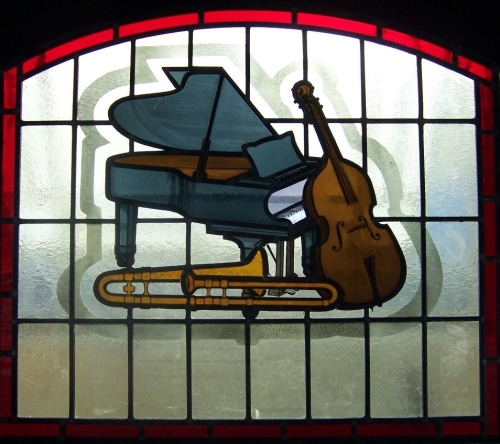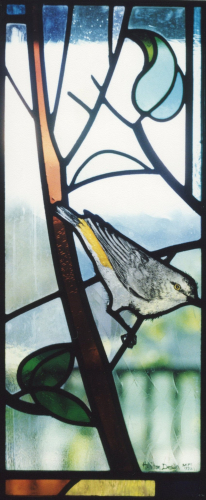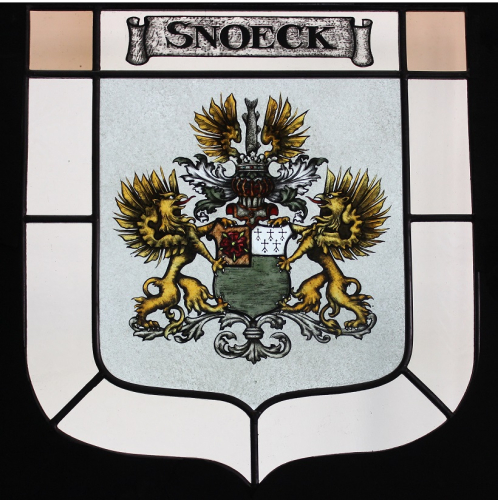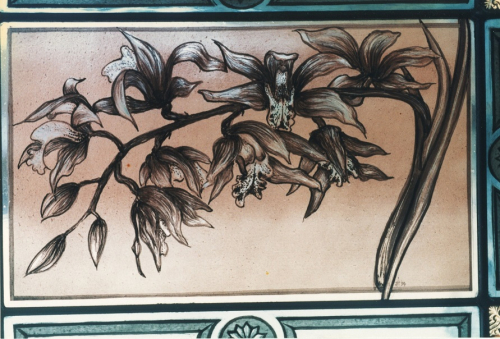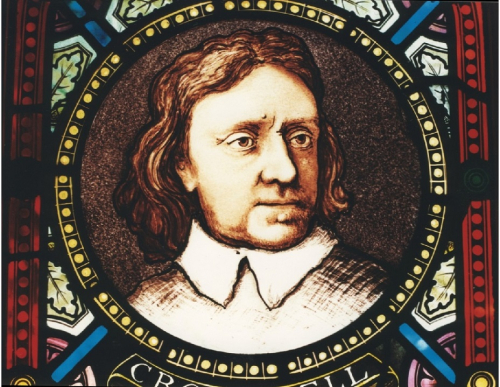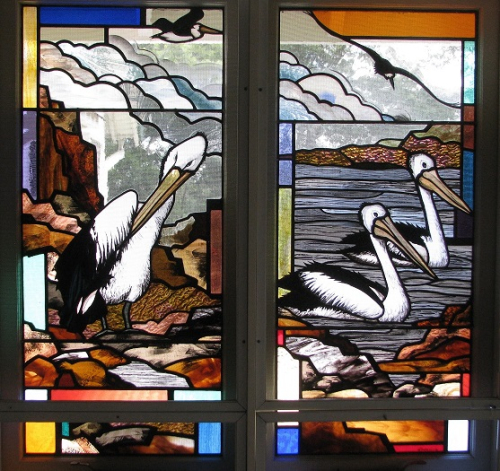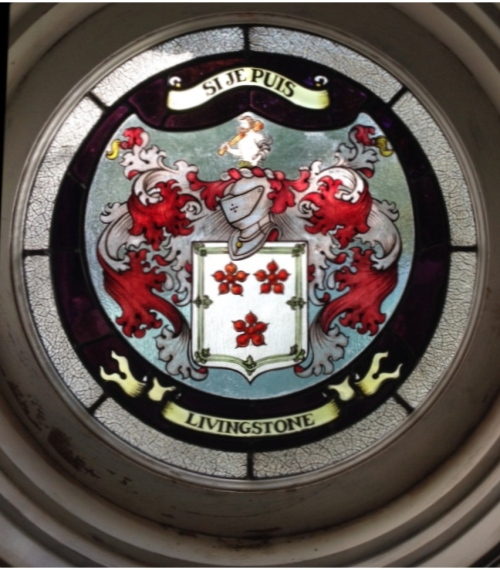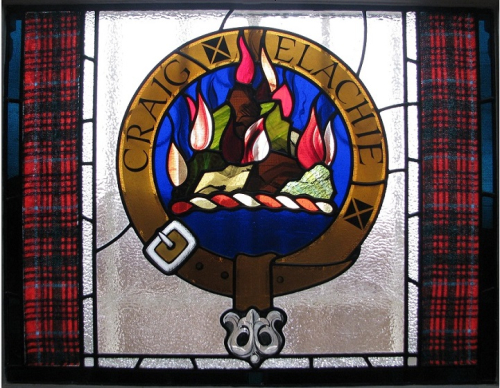Painted and Fired Glass
This is what STAINED GLASS is all about! All the windows in the medieval Cathedrals of Europe have been painted and fired piece by piece prior to construction with lead came and essentially the technique has not changed since that time. I delight in continuing an age-old tradition while exploring the boundaries of the medium. Glass paint is not really a paint at all but a suspension of finely ground glass with metal oxides and a fluxing agent. I use water as my medium (many studios use oil, the common practice in the 19th century) and gum Arabic as a binding agent. The gum enables the artist to work into the paint once it is dry by scratching and stippling to modulate the amount of light coming through the glass. Generally speaking, the colour is already in the glass when it was made; the glass paint is more or less black or shades of brown. There are green blacks and red blacks, and there are yellow browns and red browns, but basically its all either black or brown, thus adding tone to the already coloured glass.
Enamels are the exception to this. They are a different class of paint to that referred to above and are usually employed fairly discreetly to add colour highlights such as the blue in the kookaburra's wing below. Enamels are not so much a paint as a suspension of finely ground glass powder.
A third "class" of glass paint is no paint at all but a stain: silver nitrate, which actually stains the surface of the glass yellow when fired to about 570 degrees celsius. In special situations such as armorial Coats of Arms the painting may be carried out on clear glass using many different enamels and silver stain.

